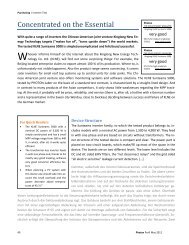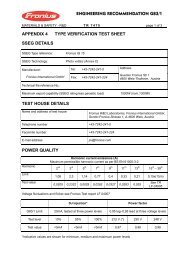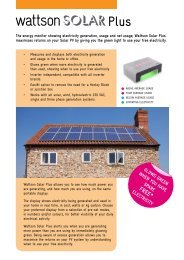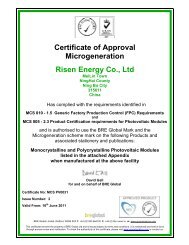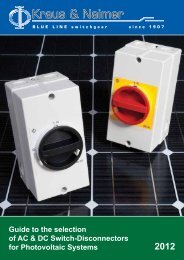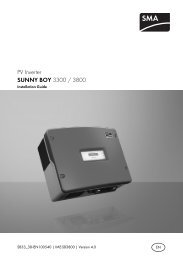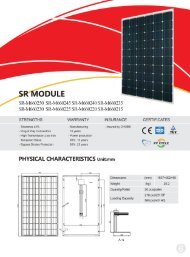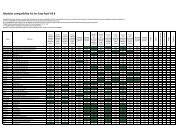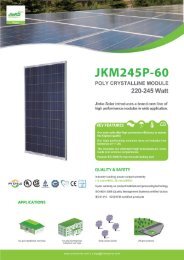Jinko Installation Manual - All Eco Energy
Jinko Installation Manual - All Eco Energy
Jinko Installation Manual - All Eco Energy
Create successful ePaper yourself
Turn your PDF publications into a flip-book with our unique Google optimized e-Paper software.
Rev. C<br />
module, that will damage the module and would be dangerous for personal<br />
safety.<br />
2.2 <strong>Installation</strong> Condition<br />
2.2.1 Climate condition<br />
Please install the modules in the following conditions:<br />
a) Relative humidity: within 45% to 95%.<br />
b) The operating temperature: within –40°C(-4°F) to 85°C (185°F)<br />
c) The wind/snow pressure load of the installation site should be less than<br />
5,400N/m2 (50PSF).<br />
*Note: The mechanical load bearing (include wind and snow loads) of the module<br />
is based on the mounting methods. The professional system installer must be<br />
responsible for mechanical load calculation according to the system design.<br />
2.2.2 Site selection<br />
In most applications, <strong>Jinko</strong> solar PV modules should be installed in a location where<br />
they will receive maximum sunlight throughout the year. In the Northern Hemisphere,<br />
the module should typically face south, and in the Southern Hemisphere, the modules<br />
should typically face north. Modules facing 30 degrees away from true South (or<br />
North) will lose approximately 10 to 15 percent of their power output. If the module<br />
faces 60 degrees away from true South (or North), the power loss will be 20 to 30<br />
percent.<br />
When choosing a site, avoid trees, buildings or obstructions, which could cast<br />
shadows on the solar photovoltaic modules especially during the winter months when<br />
the arc of the sun is lowest over the horizon. Shading causes loss of output, even<br />
though the factory fitted bypass diodes of the PV module will minimize any such loss.<br />
Do not install the PV module near naked flame or flammable materials.<br />
When solar modules are used to charge batteries, the battery must be installed in a<br />
manner, which will protect the performance of the system and the safety of its users.<br />
Follow the battery manufacturer’s guidelines concerning installation, operation and<br />
maintenance recommendations. In general, the battery (or battery bank) should be<br />
away from the main flow of people and animal traffic. Select a battery site that is<br />
protected from sunlight, rain, snow, debris, and is well ventilated. Most batteries<br />
generate hydrogen gas when charging, which can be explosive. Do not light matches<br />
or create sparks near the battery bank. When a battery is installed outdoors, it should<br />
6





